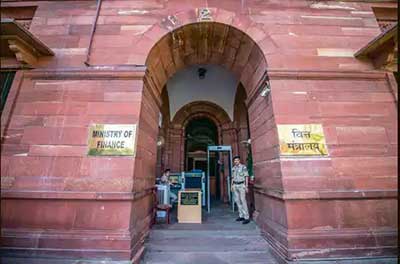Date: 24/12/2022
Relevance: GS-3: Indian Economy and issues relating to planning, mobilization, of resources, growth, development and employment and Government Budgeting.
Key Phrases: Global economy, Declining Growth, Elevated Inflation, Current Account Deficit (CAD), Base Effect, RBI, Fiscal, Monetary.
Context:
- Global economy is facing high uncertainty and is deeply scarred. However, India is believed to be in the sweet spot in comparison to the other world economies.
- Although, in India too, there are looming challenges of declining growth, elevated inflation, and a growing current account deficit (CAD) that need to be urgently addressed.
Key Highlights:
- The economy grew by 8.7% in fiscal year 2021-22 and by a whopping great 13.5% in the first quarter (Q1) of 2022-23, and was one of the highest growth among major economies during this period.
- However, this was largely due to the strong base effect of the pandemic-driven contraction in 2020-21 and Delta variant’s (Covid) shock of 2021-22’s Q1.
- As the base effect has faded, growth has been slowing down quite sharply, as indicated by high-frequency indicators.
Do You Know ?
Base Effect:
- The base effect occurs whenever two data points are compared as a ratio where the current data point or point of interest is divided or expressed as a percentage of another data point, the base or point of comparison.
- As the base number makes up the denominator in the comparison, comparisons using different base values can yield widely varying results.
Inflation:
- Inflation is a rise in prices, which can be translated as the decline of purchasing power over time.
- Headline inflation refers to the change in the value of all goods in the basket.
- Core inflation excludes food and fuel items from headline inflation.
- Since the prices of fuel and food items tend to fluctuate and create ‘noise’ in inflation computation, core inflation is less volatile than headline inflation.
Current Account Deficit:
- A deficit means that the country is importing more goods and services than it is exporting, it also includes net income (such as interest and dividends) and transfers from abroad (such as foreign aid).
- The current account can also be expressed as the difference between national (both public and private) savings and investments.
- A current account deficit may therefore reflect a low level of national savings relative to investment or a high rate of investment or both.
Challenges on the Eve of Union Budget:
- Declining growth: It is projected that year-on-year growth in Q4 of 2022-23 will be 4.2%. Annual growth will be down to 6.9% in 2022-23 and further to 5.2% in 2023-24.
- Inflation: At the same time headline inflation remains elevated
and has become broad-based, though it dipped below 6% in November.
- Annual headline inflation is to be projected at 6.3% in 2022-23, i.e., above the upper limit of the Reserve Bank of India’s (RBI) tolerance band.
- Current Account Deficit (CAD): CAD, has risen well above the
comfort level of 2% of GDP and is now approaching 3%.
- The nominal exchange rate has continued to depreciate on account of the growing current account deficit.
- Foreign direct investment and other financial inflows, which exceeded the outflow of portfolio investments, have largely financed the growing CAD deficit.
- On the Monetary Policy Front: RBI has raised the repo rate by an
aggressive 225 basis points to 6.25% this financial year.
- Liquidity has also been drained, mainly through variable-rate reverse repo auctions.
Approach to Move Forward:
- RBI could pause before any further policy rate hikes or liquidity
reduction measures to allow time for the effects of measures already taken
to pass through.
- In the external sector, it is best to allow continuing rupee depreciation to switch expenditures from imports to exports and curb the growth of the CAD.
- In 2022-23, the fiscal deficit target should be tolerated without last-quarter expenditure cuts, and the target for 2023-24 should not be reduced too sharply, this will allow time for economic growth to recover. Strong fiscal consolidation should be resumed over the medium term.
- It is better to rely on exchange rate depreciation to contain the CAD but it will not be effective without higher domestic productivity to make Indian products internationally competitive.
Conclusion:
- A fiscal policy concern that needs to be urgently addressed is the significant compression of capital expenditure in most states.
- This is attributable to the uncertainty that states face while preparing their budgets regarding the volume of central devolution and grants they will receive.
- A better and timelier coordination mechanism is required between budget-making at the Centre and the states to reduce this risk aversion due to uncertainty in the preparation of state budgets.
Source: Live Mint
Mains Question:
Q. Suggest monetary and fiscal measures to address the current shortcomings in the Indian economy. Discuss (250 words)








